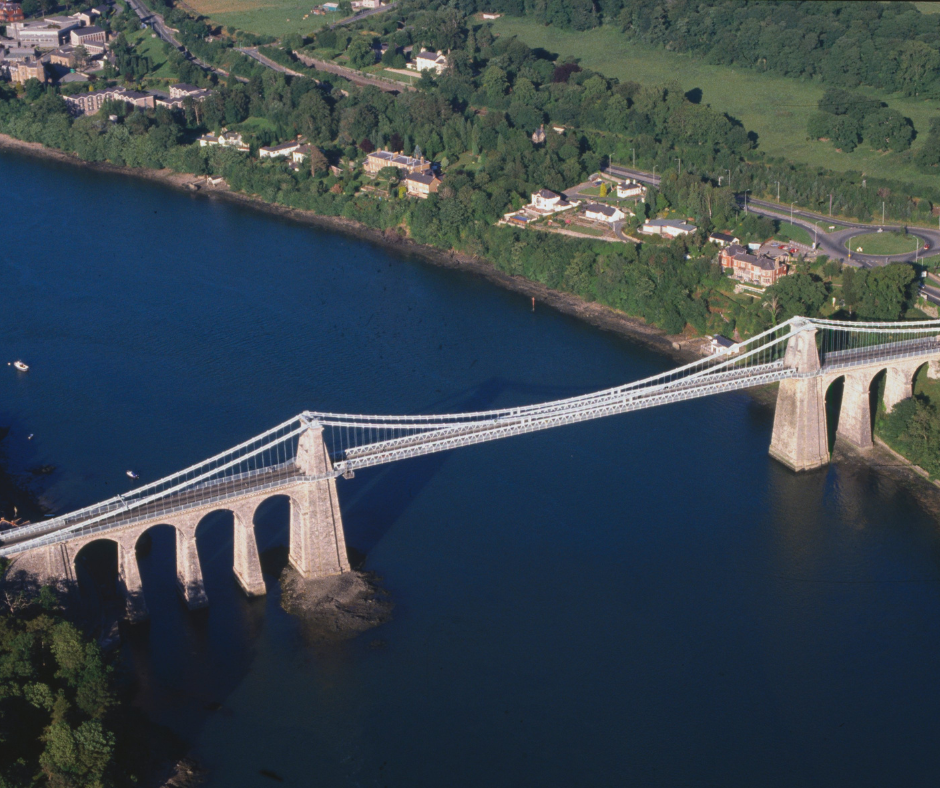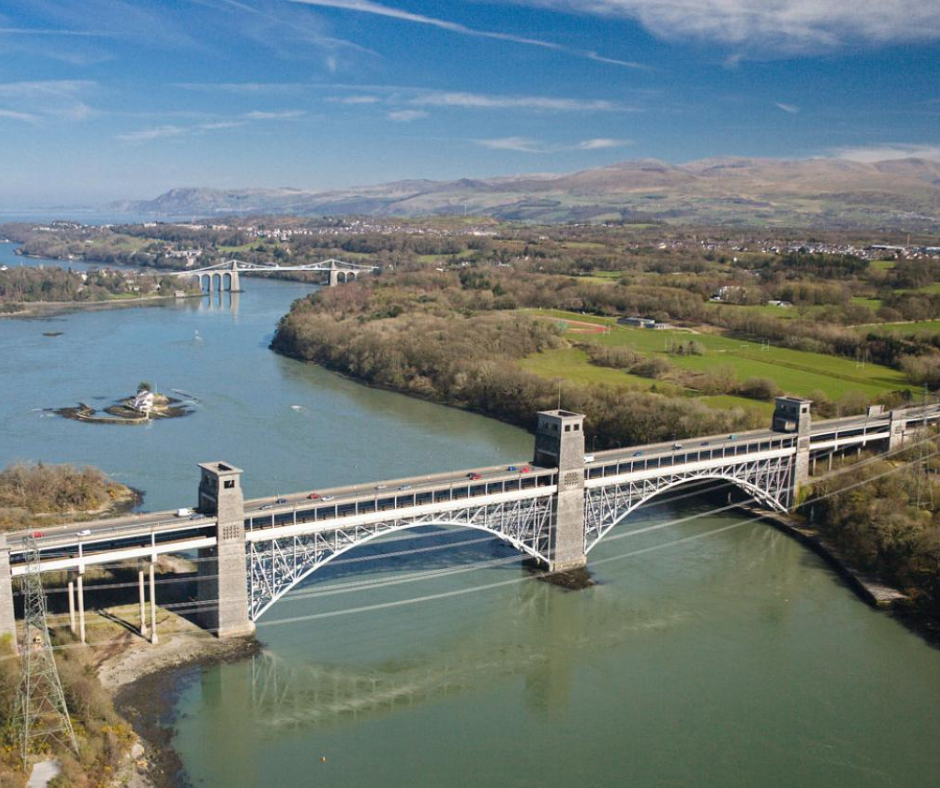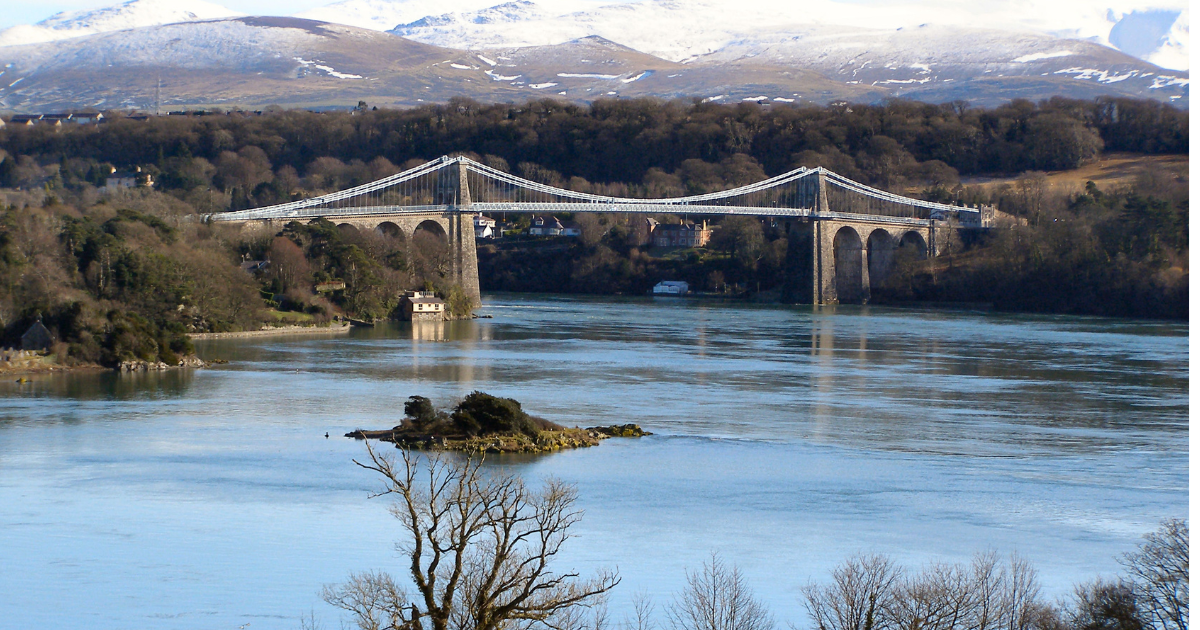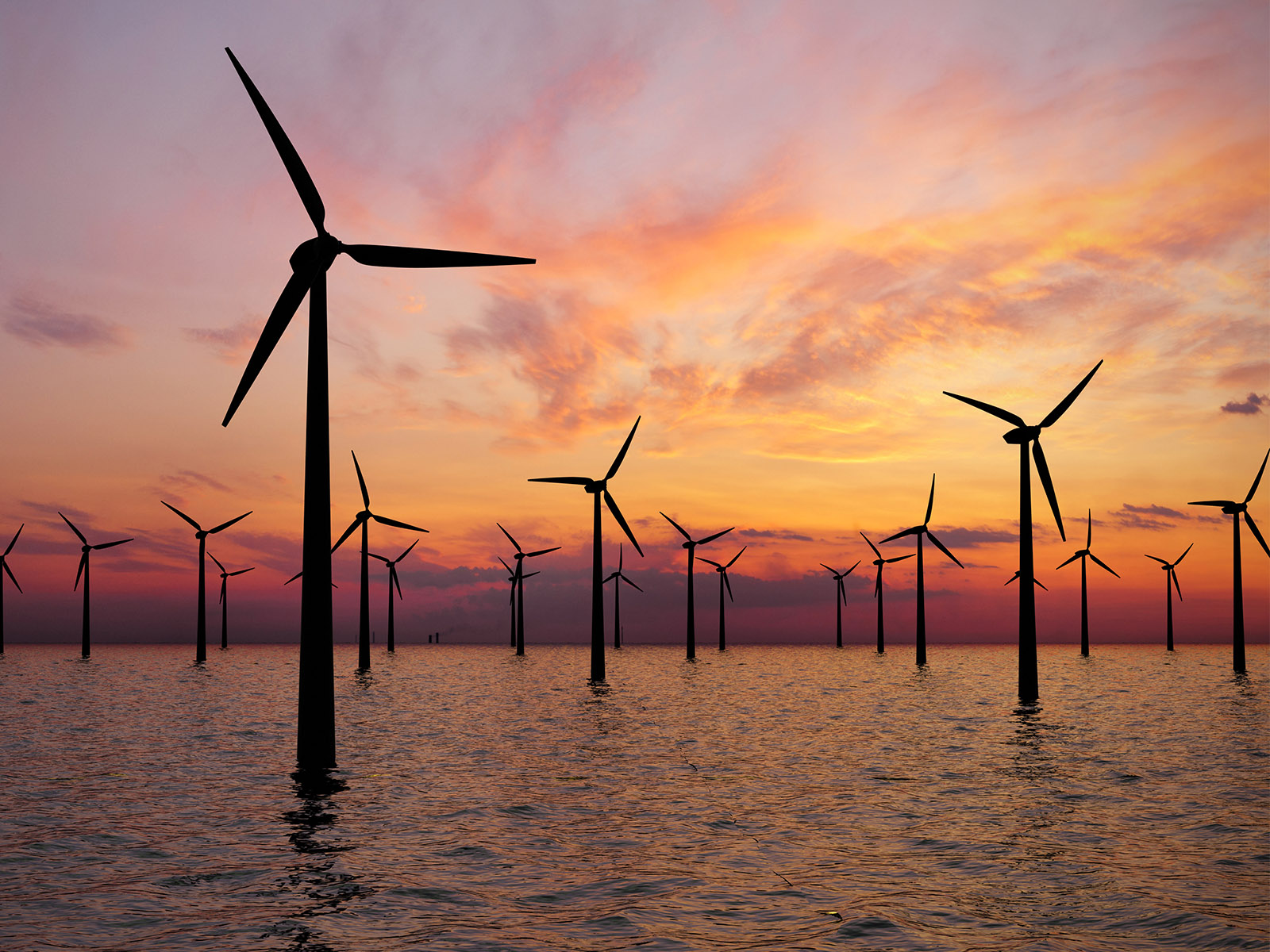Menai Bridge is a town in Wales located on the Isle of Anglesey. It is named after the Menai Suspension Bridge, completed in 1826, and spans the Menai Strait, connecting Anglesey to the mainland of Wales. The bridge is a major landmark and tourist attraction and has played a significant role in the region’s development. However, the town of Menai Bridge is a popular destination for visitors to Anglesey and offers a range of amenities, including shops, restaurants, and accommodations.
With the Menai Suspension Bridge, it took only 27 hours to get from Anglesey to London instead of 36. The bridge has also become a part of the culture as a whole. In Lewis Carroll’s classic story “Through the Looking-Glass,” the White Knight talks to Alice about the building. David Owen, a Welsh poet from the 1800s, wrote a poem about the bridge.

Background of Menai Strait
The Menai Strait was made when glaciers destroyed the land along a fault line in the Menai Strait Fault System. During the Pleistocene glaciations, which lasted from about 2,580,000 to 11,700 years ago, a series of ice sheets moved from northeast to southwest across Anglesey and nearby Gwynedd, scraping the rock and making a series of linear bedrock hollows. As the ice sheets melted away, the sea filled in the deepest of these channels, making the Menai Strait.
Anglesey has always been an island, so crossing the strait was the only way to get there. But this has always been a dangerous thing to do because the strait has four tides a day that flow in both directions, making solid currents and whirlpools.
Even though it was dangerous, ferries all along the Menai Strait took people and goods from the island to the mainland. In 1785, a boat with 55 people on board ran aground in a strong gale at the southern end of the Menai Strait and started to sink. Before a rescue boat from Caernarfon could get to the ship in trouble, it sank, taking with it all but one person.

Anglesey’s Main Source of Income Came From Selling Cattle
The sale of cattle was Anglesey’s primary source of revenue for many years. To reach markets on the mainland, especially those in London, the cattle had to be driven into the sea and coaxed to swim across the Strait. Because of this, important animals were often misplaced.
In the Act of Union of 1800, Ireland became a part of Great Britain. This quickly led to a rise in the number of people going from London to Holyhead on their way to Dublin. In 1815, the British Parliament passed a law to build the Holyhead Road. Civil engineer Thomas Telford was put in charge of the project.
The route was selected even though it was difficult to travel past Snowdonia and the Menai Strait since Holyhead was the primary terminal for ferries to Dublin and was the closest point to Ireland.
Telford advocated building a bridge over the Menai Strait from a place near Bangor on the mainland to Porthaethwy (today also known as Menai Bridge) on Anglesey as the most efficient route from London to Holyhead.
This bridge would cross the strait between a mainland location near Bangor and the settlement of Porthaethlwy (now also called Menai Bridge). After examining the path from London to Holyhead, he took this action.
The place where the bridge was built was chosen because it had tall banks that were high enough to let sailing ships pass underneath. Telford said that a suspension bridge would be the best choice because it would have a span wide enough to cross the fast-moving waters of the Strait at this point. The Parliament agreed with his suggestion.
Construction of Menai Bridge
In 1819, the towers on each side of the strait were constructed according to Telford’s designs. These were made of Penmon limestone and hollow and had cross-walls inside. Then came the sixteen massive chain cables that held up the 176-meter (577-foot) span. Each cable had five parallel bars of wrought iron links, for 80 iron bars and 935 links per cable.
The chains were moved over the piers on saddles made of cast iron that had rollers so that they could move when the temperature changed. Each chain was 522.3 meters (1,714 feet) long and 121 long tonnes heavy (123 t; 136 short tons). Their power to hang was estimated to be 2,016 long tonnes (2,048 t; 2,258 short tons).
Between being made and used, the iron was soaked in linseed oil and then painted to keep it from rusting. The chains were dragged on both sides of the strait-down three tunnels into a room carved from the rock.
There, they were held in place by bolts that were 9 feet (2.7 m) long and fit into cast iron sockets. William Hazledine was hired to provide the needed wrought and cast iron. Each chain had four adjusting links to make up for differences in length caused by flaws in making the many separate links.

Most Chains Were Put Together On-Site
Most chains were put together on-site, link by link, by workers. This was done on platforms close to the entrances of the tunnels until the chains, which were held up by scaffolding, reached the tops of the piers. Then, a cradle that could hold two workers was hung from each tower.
Moreover, the men in the cradles lifted and connected links until the chains reached the water. The last piece in the middle of each chain was moved across on a raft 400 feet (120 m) long and lifted by 150 men using a system of pulleys.
On January 30, 1826, the bridge opened with a big party. It cut 9 hours off the trip from London to Holyhead, which used to take 36 hours.
Later History of Menai Bridge
The road was only 24 feet (7.3 m) wide, quickly becoming precarious in the wind because it didn’t have any trusses to make it stronger. In 1840, W. A. Provis made the deck of the Menai Bridge stronger, and in 1893, Sir Benjamin Baker replaced the whole wooden surface with a steel deck.
Over time, the weight limit of 412 tonnes caused problems for the growing freight industry. Without shutting the bridge, the original wrought iron links were replaced with a new steel chain in 1938. In 1999, the bridge was closed for about a month so that the road could be repaved and the structure could be strengthened. During that time, all traffic had to use the nearby Britannia Bridge to get across.
On February 28, 2005, one lane of the bridge was closed for six months. This meant that only one lane was open for traffic. After its first major paint job in 65 years, the bridge was opened to traffic in both directions on December 11, 2005. The British government has put it forward as a possible World Heritage Site.
Plans for the death of King Charles III are called “Operation Menai Bridge.”
The bridge closed without notice on October 21, 2022. The Welsh Government said it was closed for essential maintenance work after structural engineers said it was unsafe. At first, the bridge was closed in both directions, but it was soon reopened to people on foot and cyclists who had gotten off their bikes. The Welsh Government said the bridge would be closed for 14 to 16 weeks and reopen at the beginning of 2023.





